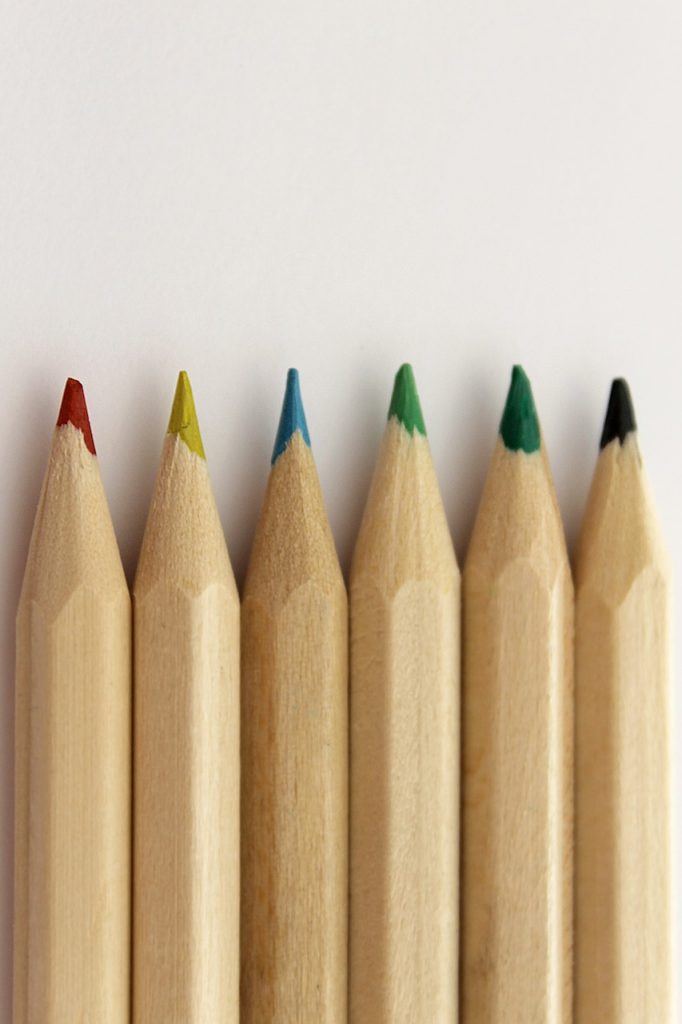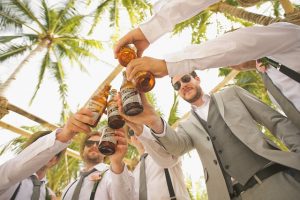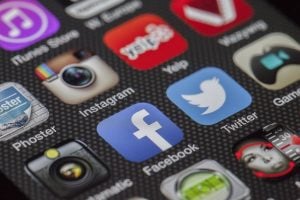Here are four statements you might receive from your professor as essay feedback.
- “Essay does not meet assignment guidelines.”
- “This is a good start, but ideas aren’t fully developed.”
- “This submission is a nice revision of your earlier draft.”
- “Exemplary! This is a wonderful illustration essay.”
I bet most (if not all) of you would say that you’d rather find the last statement written at the end of your essay. After all, who doesn’t like to receive glowing feedback about their work?
But what happens if, even after reading everything you can about how to write a good essay, you’re still trying to picture what an illustration essay might actually look like?
What happens if you’re so worried that your prof will write less than exemplary remarks on your paper that you can’t even concentrate on writing an awesome paper?
Here are two options.
You could 1) scour the internet for examples of illustration essays or 2) keep reading this post. I vote for option two because I’ve included two illustration essay examples (with annotations) in this post to inspire your own writing.
2 Illustration Essay Examples That Are Exemplary
Before we get to essay examples, here are two key points to remember about illustration essays:
- The goal of an illustration essay is to use examples to illustrate a point or phenomenon.
- An illustration essay is not an argumentative essay, so don’t confuse the two.
Looking for more information about illustration essays? Check out What Is an Illustration Essay and How Can You Write a Good One?
For both illustration essay examples below, my commentary is underneath each paragraph. The specific text I’m discussing is notated with a bracket and a corresponding number [#]. When you see an asterisk in front of that at the end of a paragraph *[#], my comments apply to the preceding paragraph as a whole.
Now, on to those illustration essay examples.
Illustration essay example #1: The Public Intoxication Phenomenon Among College Athletes in America
The text below is an excerpt of the essay and contains annotations that highlight what this writer does well and also places where the writer might improve the essay.
If you’d like to read the full essay (without annotations) click on the title above.
The Public Intoxication Phenomenon Among College Athletes in America
Introduction
[1] Three Fresno state athletes have been charged and booked after they were arrested at a house party. Fresno State’s twenty-one-year-old starting quarterback named Mark has been charged for having alcohol and being a minor. Bill, a twenty-one-year-old linebacker, has been charged for obstructing a police officer. A twenty-three-year-old captain of the women’s soccer team named Jessica will face a misdemeanor charge for public intoxication; all three athletes will serve one game suspensions. Mark refused to leave the scene when asked due to the fact that he was a minor. Bill was not being cooperative toward officers by refusing to take a Breathalyzer test. The 23-year old soccer player had a blood alcohol level of 0.136 and the legal driving limit is 0.08. If convicted, all three students could face up to one year in county jail. These stories are often in the news about college athletes because they are known more throughout the community, so they are spotted easily than a non-athlete. So any little altercation they get into or law they break they will be picked out and addressed by the authorities or faculty. Athletes also have different motives as to why they drink compared to everyone else because they have different stressors than their counterparts. The consequences an athlete can face are more severe than a member of the student body because there are a series of standards that an athlete has to uphold. The reduction of the amount of alcohol consumption by a student-athlete has to be at a moderate amount due to their involvement and presence at school. [2] This paper will investigate why this is a recurring phenomenon among college athletes. They consume alcohol more frequently and at a higher quantity as opposed to their colleagues due to their different mentalities.
[1] The writer of this paper uses a list of examples of drunk athletes to help establish how common it is for athletes to be intoxicated.
Though this list of examples is too long for a shorter paper, because this opening is part of a longer paper, it works well in an introduction to grab readers’ attention.
[2] The final two sentences of this paragraph serve as the paper’s thesis statement. It identifies the focus of the paper: to illustrate that college athletes drink more frequently and consume more alcohol than other students.
Though the thesis functions well enough, it could be improved by combining the two sentences and using more effective wording.
For instance, the thesis statement might read like this: Due to differences in mentality, recurring intoxication is more common in college athletes than non-athletes.
Body paragraphs (excerpt)
The Amount of Alcohol College Athletes Consume
Student athletes are known to consume more alcoholic beverages than their fellow non-athlete counterparts. [3] Athletes partake in what is called binge drinking; this method of drinking is defined as drinking five or more beverages with in the course of an hour (Tewksbury, Higgins, & Mustaine, 2008). College is a major transition in the course of one’s life, meaning that they are making a shift from adolescence into young adulthood. Athletes drink more than their fellow students because they are put under more pressure. These pressures have multiple causes like the coach asking for optimal performance, as well as balancing classroom expectations (Doumas, Turrisi, Coll, & Haraso, 2007). [4] One big reason for the consumption is that they do not know any of the college community due to their regimented school schedule because they have to fit it time for practice throughout the day. So it eliminates any flexibility for interaction with anyone outside his or her immediate group. Social norms theory applies to alcohol use in athletes because they generally overestimate what they counterparts are drinking, Perceived norms and acceptability of alcohol use correlate with personal drinking because they are trying to keep up with everyone else (Martens, Dams-O’Connor, Duffy-Paiement, & Gibson ,2006). They are so desperate to fit in that they will do anything it takes to gain that acceptance. Athletes have to deal with unique stressors in comparison with students who are non-athletes. They play more value on opinions and behaviors of those with similar problems because that who is they associate with more during the course of the day (Martens et al.). Research on college drinking has supported the social norm theory. Providing evidence that perceived alcohol usage is exploited mostly among college athletes because of certain reinforcements. *[5]
[3] The writer correctly cites sources in APA format by including the author’s last name and the year of publication.
If you’re used to MLA format and need a quick refresher, read The Stress-Free Guide to MLA Format (8th Edition).
[4] Watch out for long, rambling sticky sentences like this one. The writer could improve the readability of this sentence by cutting unnecessary wording.
The new sentence might read something like this: Because college athletes have regimented school and practice schedules, they do not know much of the community and are more likely to consume alcohol.
The revision cuts 11 words. I know this doesn’t help your word count if you’re struggling for content, but it does help the readability.
*[5] This paragraph provides examples of student athletes drinking more heavily due to various stressors that they face.
The ideas expressed in this paragraph help the writer illustrate that the over-consumption of alcohol and public intoxication are problems among college athletes.
[6] Motives That Attribute to Athletes Over Consumption of Alcohol
A positively reinforced internal motive to drink is to enhance your mood states. Meaning since an athlete is being demanded to compete at a high caliber for two to three hours during practice as well as games during the weekend. So they need a way to release that stress which comes by way of consuming alcohol. Another motive to drink is a more external reason. They use alcohol as a familiar commodity that they can relate to and enjoy together. The external motive for drinking is to avoid rejection from peers, since athletes only associate with their fellow athletes and if they do not follow along and drink they will be rejected from the athletic group and they will basically be alone throughout their college life. One last internal motive to drink is being criticized and belittled by the coach, which puts them in more of a negative mood. Studies reported that student athletes report high levels of social motives than non-athletes (Perkins, Westley, & David, 2006). As young athletes enter new environments their fellow teammates help determine what attitudes and behaviors are expected to be appropriate. Peer influence is especially significant for highly integrated groups. (Andes, Poet, & McWilliams, 2012) did a study one-alcohol consumption, particularly with regard to high-risk behavior such as drinking games. The athletes drinking may increase drinking as their season increases because there are pressures to be perfect because they may be close to playoffs. In a study done on college athletes, intramural athletes they discovered that they drank more than non-athletes, but there is no difference between intramural athletes and intercollegiate athletes. The amount of sport involvement and increased so did the binge drinking. College athletes have the “work hard play hard” athletic identity is the extent to which a person identifies with an athletic role so they have the mentality so they fill the need to be the person that drinks the most and who is the alpha male. Individuals with low levels of athletic activity or involvement drink less because they usually don’t get invited. One stigma that follows players is their competitiveness; their competitiveness does not just stay on the field it translates to drinking. They are more susceptible to binge drink because they do not like losing and always want to be the best. So they can drink past the point where normal non-athletes would stop. *[7]
[6] While the writer wisely uses headings to break up the paper, the heading formatting doesn’t follow APA guidelines.
The writer correctly uses title case capitalization, but Level 1 headings in APA should be in bold text and centered.
Need to use headings like these in your APA paper? Check out this tutorial.
*[7] This paragraph is a bit lengthy, and the writer could organize the information more effectively by separating ideas (perhaps into external and internal motivation) and by using clear topic sentences to indicate the focus of each paragraph.
In addition, this paragraph is a bit more argumentative than the previous ones. However, it includes a variety of examples to illustrate that athletes drink for a variety of reasons, including peer pressure, stress from coaches, and celebration.
To make this a stronger illustration essay, the writer could also cite additional evidence and examples of athletes who are guilty of binge drinking or public intoxication instead of focusing so heavily on why athletes consume alcohol.
Illustration essay example #2: The Impact of Media Hype on News Today
This essay is written in response to two articles and provides an illustration of how media often exaggerates stories as a scare tactic. The essay also includes the writer’s personal reaction to such tactics.
Remember to check with your professor to see whether you’re allowed to write in first-person point of view (as this essay does).
Media Hype Paper
Introduction
John Stossel wrote two compelling articles, Worry About the Right Things and The Media Likes Scaring Us, about how American media focuses on writing stories that feed our Fear Industrial Complex and why we like it. It is not shocking that the news hand-picks stories that are rare but extreme. [1] The news today is focused more on entertaining to keep the public’s short attention to achieve their desired amount of views. Often these stories “hype” up a fear that is statistically improbable, but has had a few occurrences.
[1] The last two lines of this paragraph provide an effective thesis to illustrate the focus of this paper: the fact that the media often exaggerates and hypes news stories in order to increase profits.
Take note: Although this thesis statement is divided into two sentences, profs are sometimes sticklers for the one-sentence thesis.
Body paragraphs
[2] An example of the media “hype” is when the Sandy Hook shooting happened. The media focused a lot on how Adam Lanza was an introverted video game player rather than the fact he did have psychological issues his parents failed to address. After this incident my own family took away some “violent” video games from my brothers because the news was trying to prove there is a correlation between violent video games and crime, even though studies show there is an insufficient amount of evidence to make that connection. Stossel was explaining in his article that people don’t think abstractly about probability and this is a prime example of that. *[3]
[2] Pay attention to the wording in this sentence. It begins with “An example…” This transition is an easy way to not only link paragraphs but also signal to your readers that you’re moving from one example to the next.
Need a few more ideas for transitions? Check out 97 Transition Words for Essays You Need to Know.
*[3] In this paragraph, the writer helps support the thesis by using the example of how violent video games may increase violent behavior in people and how the media stresses these ideas to instill fear.
For example, Stossel brought up people’s unjustified fear for the bird flu, myself included. I was surprised that not a single person in America died of the bird flu while the common flu killed tens of thousands, yet the media was covering the influenza for months. The media depicted the bird flu could kill you at any second. I usually don’t keep up on my flu shots and that year I got my flu shot to ensure I wouldn’t die. Even though the regular flu is the more likely imminent threat, and my fear can be connected on how the media depicts the flu vs the less likely event of the bird flu. *[4]
*[4] Again, the writer uses a specific example in this paragraph (fear of bird flu) to illustrate that the media hypes stories to create fear and increase ratings.
Stossel also brings up the topic of plane crashes vs driving a car and how the media “hypes” people’s fear of flying, when driving is even more dangerous. I am a victim of being afraid to fly because of the media. It seems like every time I have to take a plane trip the news shows a horror story on how an engine explodes mid flight or a bomb threat was made. I visit my grandparents every year who live in Florida. After 9/11 happened I told my grandparents to cancel the plane tickets they had bought because I was too scared to go on the plane. Even though 9/11 was a great tragedy, and wasn’t necessarily hyped, seeing those images as a child scared me to even step foot on a plane. To this day, whenever the plane takes off or hits some turbulence I grab onto the sides of my chair and hold on. However, the biggest offender of having non factual based fears due to the media is my mom. *[5]
My mom did not grow up in the United States so whenever she hears the media’s “prophecy of doom” she believes it. Like Stossel’s friend Nader, my mom has irrational fears because of the media. For example, I am planning to study abroad next semester and my mom tells me it is dangerous or something like the Amanda Knox case could happen to me. Even after I tell her there are hundreds of thousands of kids that study abroad each year and return safely home. However, due to that individual case my mom feels like it is a potential danger that the judiciary system in another country will not be in my favor. *[6]
*[5], *[6] These two paragraphs present additional examples of the media exaggerating stories (of plane crashes and being held prisoner in a foreign country).
Remember, writing an illustration essay means that you’ll need to include a number of examples (just like this essay has) to effectively illustrate that a phenomenon exists.
Conclusion
I was not very surprised by Stossel’s articles about how the media likes to expose us to improbable but exciting stories. However, I am a victim to not questioning the information given by the media. For example, up until I read the article I thought there really was a cancer epidemic. Moving forward, I hope to think critically and objectively about the information the media gives me. *[7]
*[7] Though this conclusion manages to wrap up ideas, it does need some revision.
I mentioned earlier that the writer uses the transition “for example” to effectively link paragraphs. While the transition works well in a previous paragraph, it is out of place in this short conclusion. It brings in new information that should be addressed in the body of the essay.
Also, just because wording is appropriate in one section doesn’t mean that it should be repeated many times. Variety is important too!
On the Road to Exemplary
It can be a long, winding, and sometimes difficult road to exemplary writing, but with practice, I’m sure you’ll reach your destination.
If you’re looking for more tips to improve your writing, check out these posts:
- Passive Voice: How to Avoid This Writing Pitfall
- Avoid These 10 Common Grammar Mistakes in Your Paper
- How to Write Good Hook Sentences
Interested in getting even more help with your paper? Why not have an expert editor at Kibin review your work?




